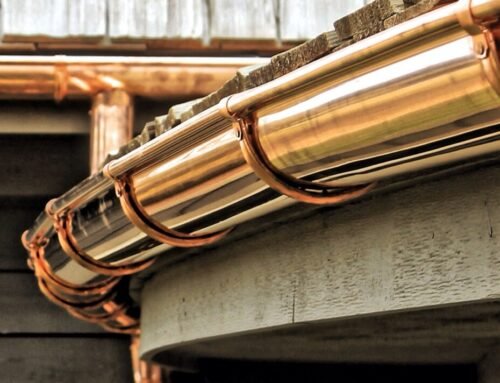
The Lower Mainland and regional arms extending from its girth may not rank among the coldest of climates in the country. However, that does not mean that our residents and their respective homes are not susceptible to the bumps and bruises taken from the arrival of an especially frosty winter. In fact, the innate west coast confidence in our milder weather can work against homeowners. Preventative measures taken to protect home-exteriors in the winter across the nation are too often neglected here in the Greater Vancouver area. Because of this, households are ill-prepared when a cold snap hits, something that has occurred more often than not in recent years.
One of the biggest culprits impacting your exterior when freezing temperatures take hold are ice dams. Ice dams, in this context, form when snowmelt from your roof enters your gutters where anything at or below a 0°C (32 °F) reading will turn it into ice. At this point an “ice dam” is created. In the Lower Mainland, where snow is often interchanged with rainfall within minutes of falling, additional water can enter the gutters and build up behind the pre-existing blockage of ice. The weight will not only directly impact your gutters, it can be detrimental to your entire home exterior, interior, and to the safety of those on your property. Thankfully, measures can be taken to prevent it all from occurring. Read further to find out what you can do to better protect your home.
5 Tips to Preventing Ice Dams from Forming in Your Gutters in the Winter
1. Keep Gutters Clear of Debris at All Times
While keeping your gutters clear of debris should be a regular practice throughout the year, such a thing is absolutely essential from late autumn into the winter. Leaves and other materials that can find their way onto your roof and into your gutter system can of course add to the buildup, preventing initial waters from draining, and thus create an atmosphere conducive to ice damn formation. Get into the habit of inspecting your gutters once per week, and after any notably windy days in your area.
2. Promptly Remove Snow From Your Roof
You’re likely accustomed to breaking out the broom and shovel to hit the driveway, paths, and sidewalks surrounding your home immediately after a heavy snowfall. The same is probably not true in regards to your roof. You will want to make snow removal from your roof a part of this routine in order to keep ice dams at bay. That being said, please don’t attempt to climb on up there to do the job. A visit to your local hardware store during this time of the year should provide you with the necessary snow-removal tools. Unsure of what to look for? This roof rake will do just fine for most single-level homes. Be sure to tell your hardware shop expert what your roof is made of (types of shingles, etc…) so as to not cause any damage during the roof raking or shoveling process. You may also consider professional snow removal, a safer alternative for those with limited capabilities to do the job on their own.
3. Prevent Heat Escaping from Your Home to Your Roof
Since snowmelt is the root cause of ice dams, you must do all that you can to prevent snow accumulation from melting. This means controlling the heat that rises from the interior ceiling and/or attic of your house. Homes concerned about ice dams will use a high R-value insulation. In essence, the R-value represents a unit of thermal resistance for your home’s insulation. A high R-value will provide the best resistance to conductive heat transfer and will prevent heat escaping to your roof. Unseen damage in the form of air leaks in your ceiling/attic can also allow heat to escape and melt the snow on your roof. Have your home professionally inspected before the arrival of freezing temperatures and snowfall and promptly seal any existing threats. Lastly, other points of interior heat transfer and termination may have been built into the home without thought of how they will impact snow accumulation. Kitchen and bathroom exhaust systems exiting onto the roof can cause snowmelt, as can chimneys that only extend a few feet out from the roof’s surface. In such cases more expensive measures in the form of building extensions may be required, although such a thing may only be necessary for those of you living in the high-elevations above Greater Vancouver (North Vancouver, Squamish, etc…).
4. Install Ventilation Systems for Attic, Roof Ridge, and Eaves
Keep your roof cool by using a natural ridge and soffit ventilation system to draw outdoor air into your attic and flush out the warm air, far enough away from your roof and eaves. The rule of thumb here is that the ventilation area should be approximately one square foot for every 300 square feet of your home’s ceiling area (attic floor space).
5. Have a Professional Inspect & Clean in the Pre-Season
We have provided the above tips for those that choose to tackle the task of ice dam prevention on their own. However, when it comes to truly providing your household with peace of mind during the frost-bitten season there is no better course of action than securing the services of a professional gutter repair and cleaning company. We see things that the untrained eye cannot. Homeowners may consider their gutter system to be in working order because the membrane and trough appears to be in good shape, yet neglect to identify deteriorating seams and drains. The varying scenarios are numerous. A professional on the other-hand can assess existing threats and prospective risks to your gutters upon first inspection. If you reside within the Greater Vancouver area, especially in higher elevations where ice dams are a real threat, feel free to contact AquaSeal for gutter repair and cleaning at anytime.








Leave A Comment